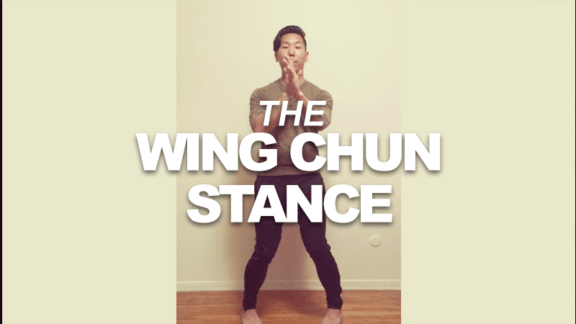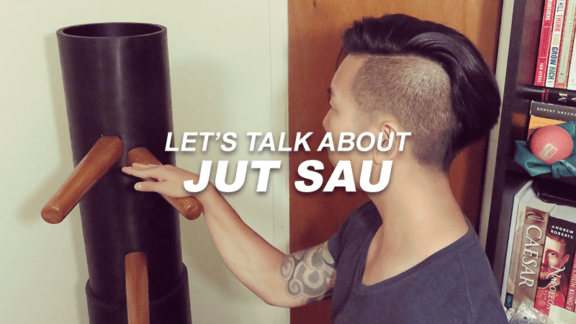Thinking Outside the Box to Create New Wing Chun Techniques
Let’s talk about thinking outside the box and creating new Wing Chun techniques.

My friend, Michael (MJBarry on Youtube), introduced a new idea to me. He introduced the idea that each technique can have more than one purpose and can be done on multiple planes.
This is what I mean by multiple planes:
You have the Center Plane, Upper Plane, and Lower Plane.
- Center Plane are techniques done at the body level – Examples: Bong Sau, Tan Sau, Man Sau
- Upper Plane are techniques done high, mostly strikes – Examples: Biu Sau, Throat Chop, Blade Strike
- Lower Plane are techniques done low – Examples: Gan Sau, Gum Sau
The idea is to take the normal use case of each technique then using them outside their normal plane.
For example, let’s use Bong Sau 🙂
Bong Sau is normally done at the Center Plane but in Chum Kiu, you can see it done in the Lower Plane. But I haven’t really seen it done on the Upper Plane. This new idea that Michael introduced made me think of a way to use it in the Upper Plane.
Upper Plane Bong Sau – Deflecting upwards and forward to expand my opponent’s opening.
I haven’t tested the Upper Plane Bong Sau yet but as you can see from the Bong Sau example. We have essentially increased the amount of techniques we have at our disposal. In my mind now, each technique that I know are essentially three techniques because it may be possible to do them all on a different plane.
When it comes to new ideas with techniques I always welcome them because I want to take in as much as I can so I can test them out in my Wing Chun class to see what works. Now, if I introduce an idea that’s new to you, please try it out in your class, with your training partner, and let me know how it works for you. It’s also okay for the idea to fail because it’s better to know that something doesn’t work so we can move on.
Modifying Our Wing Chun Forms
My Sifu says that the Wing Chun forms were created after the techniques were established as a way to memorize the techniques.
This year I’ve been working on adapting my Wing Chun to me.
Since I want to adapt Wing Chun to my personal capabilities, I’ve decided to modified some of my forms. These aren’t big modifications, just small things. Right now, it’s currently just adding forward steps, to close the distance, with each striking movement. I’m planning to share my modified forms so you can compare it to the traditional forms I learned.
But for the moment, the reason for this modification is based on several things.
I believe staying on our toes instead of being static is super beneficial and I learned this when I was doing Chi Sao in Central Park every weekend this past summer. It opened my eyes to how important footwork is. I don’t mean just Shifting but moving in, moving out, and retreating at different angles. For me, the best way I could think of to emphasize these things was by incorporating them into my current forms. By adding more footwork and stepping in to my forms, I also add it to my muscle memory.
I won’t be making big modifications to my forms because the movements I add need to make sense. But I’m keeping an open mind and I am thinking about the little details that I haven’t noticed before that you guys have. I also believe this wouldn’t have happened if I didn’t share my form, so I’m glad I did. Thank you for your feedback.
Keep in mind that these modifications are only for myself. I’m only starting with one little idea at a time. They focus on things that I need to work on. If you’re thinking about modifying your form, ask yourself, what do you want to improve in your Wing Chun?
Rules of Wing Chun
Let’s talk about the most important rule of Wing Chun!
Before I share that with you, I want to talk about differences.
When I look at my Sifu, I can see our differences right away. We are different in height, size, shape, and more. This makes his style of Wing Chun uniquely his own so when I learn it, I am essentially learning his style of Wing Chun. Whatever I learn from him, I know that based on our physical difference, it will look different than the way he does it. The only thing we will share in common is the knowledge of the technique and how to use it.
This means, regardless of who our teachers are or what lineage or Wing Chun style we’re doing, it will always be different than the way we learn it because our mind and body processes it differently. We all create our own style of Wing Chun when we learn and train. And that’s a good thing because through our differences we create new perspective that adds to the style.
So…what is the most important rule of Wing Chun? It is understanding yourself and using what works for you by adapting Wing Chun to you and not conforming to other people’s style or standards. Embrace the difference.
Create Your Own Wing Chun Form
What do I mean by creating your own form? It means gathering all the techniques you know and making an actionable form out of them. This is a memorization technique so that once your body is used to doing the form, it becomes natural for you.
In this video I use Chi Sao as an example and talk about creating my own Chi Sao Form which goes through my Chi Sao techniques.
The reason I created a Chi Sao Form is because when I go through the techniques, by relying on muscle memory, I have an advantage over my opponent because my body already knows what to do. Instead of spending time on remembering my technique, I spend that time thinking of the next move.


